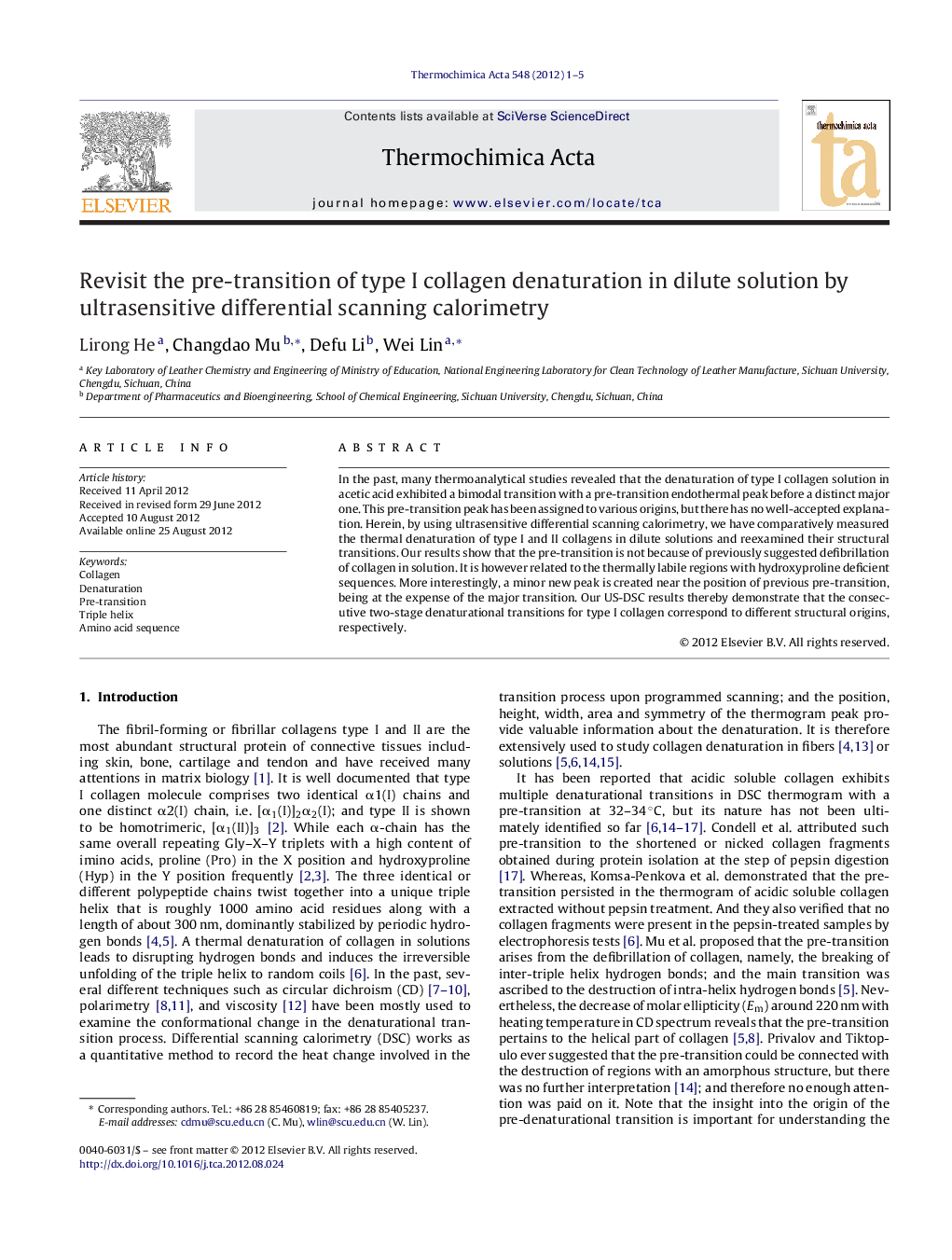| Article ID | Journal | Published Year | Pages | File Type |
|---|---|---|---|---|
| 673953 | Thermochimica Acta | 2012 | 5 Pages |
In the past, many thermoanalytical studies revealed that the denaturation of type I collagen solution in acetic acid exhibited a bimodal transition with a pre-transition endothermal peak before a distinct major one. This pre-transition peak has been assigned to various origins, but there has no well-accepted explanation. Herein, by using ultrasensitive differential scanning calorimetry, we have comparatively measured the thermal denaturation of type I and II collagens in dilute solutions and reexamined their structural transitions. Our results show that the pre-transition is not because of previously suggested defibrillation of collagen in solution. It is however related to the thermally labile regions with hydroxyproline deficient sequences. More interestingly, a minor new peak is created near the position of previous pre-transition, being at the expense of the major transition. Our US-DSC results thereby demonstrate that the consecutive two-stage denaturational transitions for type I collagen correspond to different structural origins, respectively.
Graphical abstractFigure optionsDownload full-size imageDownload as PowerPoint slideHighlights► The thermal denaturation of type I and II collagens has been measured by US-DSC. ► Pre-transition of type I is related to thermally labile regions with deficient Hyp. ► The two-stage denaturation of type I corresponds to different structural origins.
